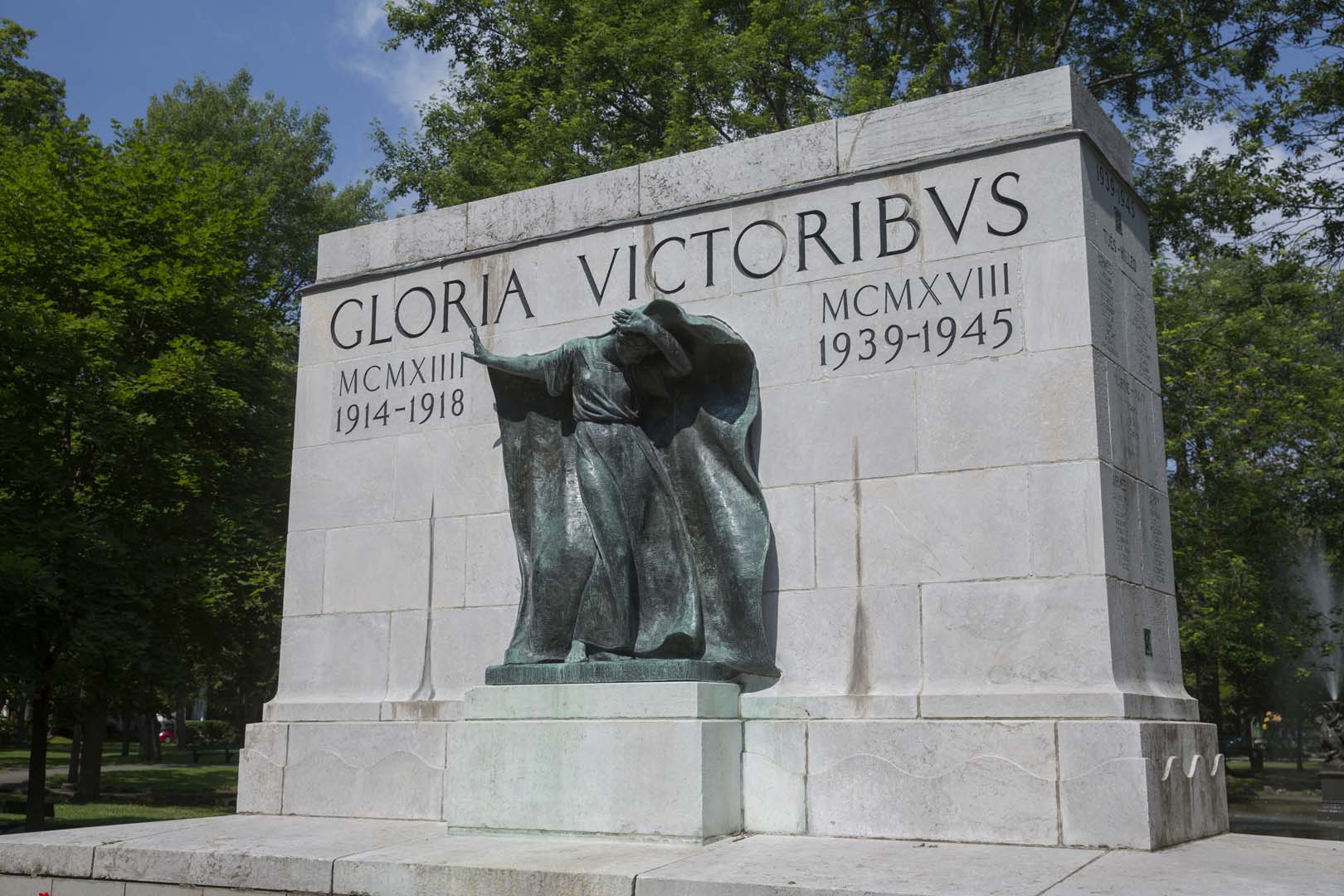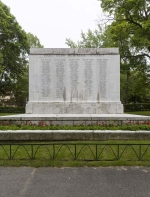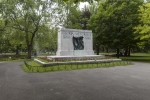Henri Hébert
Monument aux braves d'Outremont
1925
Presentation of the artwork
Inaugurated in Parc Outremont, in the presence of the minister of defence at the time, Edward Mortimer Macdonald, this cenotaph pays tribute to and perpetuates the memory of those who died in the two world wars. The sculptor, Henri Hébert, worked with Montréal architect John Roxburgh-Smith to design the white-marble stele. The names of the dead soldiers are inscribed on the surface of this “wall of sacrifice.” Hébert gave a specific name to the main element of the memorial, “La Ville d’Outremont pleurant ses morts sous l’ombre du drapeau” (the City of Outremont weeps for its dead under the shadow of the flag). It is a bronze sculpture sitting atop the stele. An allegory for the city of Outremont in mourning for the death of its sons, this sculpture portrays a young woman crying, her right arm behind her, the palm of the hand turned outward, in a gesture of grief. The use of a modernist vocabulary for the modelling indicates that this figure was inspired by the sculpture Meditation or the Inner Voice (1896) by Auguste Rodin, for whom Hébert expressed his admiration in 1918. Associated events
The two world wars, from 1914 to 1918 and from 1939 to 1945, were major events in the history of humanity. Among the 1.4 million Canadian soldiers who took part in these two conflicts, 118,000 lost their lives. Canadian soldiers from the city of Outremont were among the victims. They were Anglophones and Francophones who fought side by side for their country.
The monument was initially dedicated to victims of the First World War.
After 1945, however, new inscriptions were engraved on the monument’s marble
wall to pay tribute to victims of the Second World War.
Henri Hébert
The son of the sculptor Louis-Philippe Hébert, Henri Hébert was born in Montréal in 1884. He was trained at the École des beaux-arts and the École des arts décoratifs in Paris, then returned to Montréal in 1909. His career was divided between executing various commissions and teaching. In 1910, he became a member of the faculty of the School of Architecture at McGill University, and in 1923, he taught modelling at the Conseil des arts et manufactures at the Monument national. In 1940, Hébert received an honorary doctorate from the Université de Montréal. An associate member of the Royal Canadian Academy of Arts, he died in Montréal at the age of 66.
Awards and honours
- doctorat honorifique par l’Université de Montréal, 1940
- Membre associé de l’Académie royale des arts du Canada,






